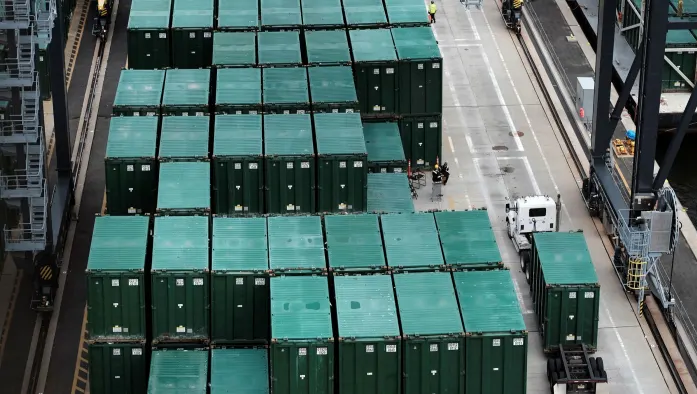
image via: FT.com
The world is witnessing probably the biggest shock to supply chains since British logistics consultant Keith Oliver is thought to have first coined the term in 1982.
If companies respond by raising inventory levels to ensure they have adequate stocks of materials, then we should start to prepare ourselves for more volatile business cycles.
Some argue that we are close to “peak” supply-chain stress. The US consumer’s demand for goods may soon begin to revert to its pre-Covid-19 trend as spending gradually rebalances from goods towards services.
Moreover, global business survey indicators on supplier delivery times and component shortages are already at extremes. At such levels, these indicators typically revert to the mean (often rapidly). In Asia, inventories in countries such as Japan and Korea have grown faster than shipments over the past three months.
The more supply and demand move back into balance, the more pricing pressures should abate, and inflation rates fall. In which case, now is not the time for central banks to get dragged into premature rate rises.
This sanguine view is plausible, assuming that the post-Covid inventory imbroglio is just temporary.
But the current level of supply-chain stress is on a different scale to the normal, cyclical experiences of the past 20 years. For example, recent data from the European Commission for the eurozone show the highest percentage of companies reporting shortages of equipment, raw materials and labor in forty years.
Intriguingly — and also for the first time in almost forty years — the percentage of companies citing “shortages” exceeded the number experiencing “insufficient demand”. This is as important as it is unusual: supply constraints at present exceed demand constraints.
Most policymakers have only known a world where demand has been limited and supply has been elastic. Whatever the demand, China has been ready and willing to meet it as the world’s supplier of last resort.
The policy response to the pandemic has upset that balance. High levels of saving and government transfers during lockdowns have underwritten a dramatic rebound in global demand but failed to prepare supply, creating a bullwhip effect. Now it is supply that appears to be constrained and “inelastic”.
That is a very different policy environment — one where restoring global equilibrium in the goods market becomes more difficult; where national output gaps take on more significance; and where ensuring sufficient local inventories of goods takes on greater importance for both countries and corporates.
The longer the supply-chain crisis continues, the more inclined companies will be to rethink their business models. They may decide to invest more to reshore production; they may vertically integrate to take back control of their supply chains; they may start to over-order and carry higher inventory as they shift from a just-in-time to a just-in-case model.
Adapting to these challenges will place additional demands on corporates’ free cash flow and balance sheets. And they could have macroeconomic consequences. Inventory build-up and depletion is a key driver of the economic cycle. The longer inventory levels stay elevated, the more volatile they could become — as could the business cycle.
This supply stress is happening at a time when hyperglobalization is on the back foot, be it from US-China tensions or from the pursuit of strategic autonomy as nations shift from social to economic distancing. There is also pressure from climate-transition policies to localize supply and labor markets remain exceptionally tight, too.
Optimists argue that the just-in-time supply-chain model has come through the coronavirus crisis with flying colors. If nominal demand moderates, if economies rebalance from goods to services and if new supply comes on stream, then worries about inflation could disappear as quickly as they came.
However, the risks are that the scale and duration of the Covid stress-test has already begun to challenge the old model. Supply chains have proved to be vulnerable — even if that has been caused by excess demand and under-investment. Supply-chain disruptions and increased inventory volatility may not be just a temporary bug. In which case, if nominal demand continues to grow faster than supply, then inflation is likely to stay elevated and spread to the labor market. The stakes for policymakers could not be greater.
Source: FT.com November 22, 2021 | By David Bowers